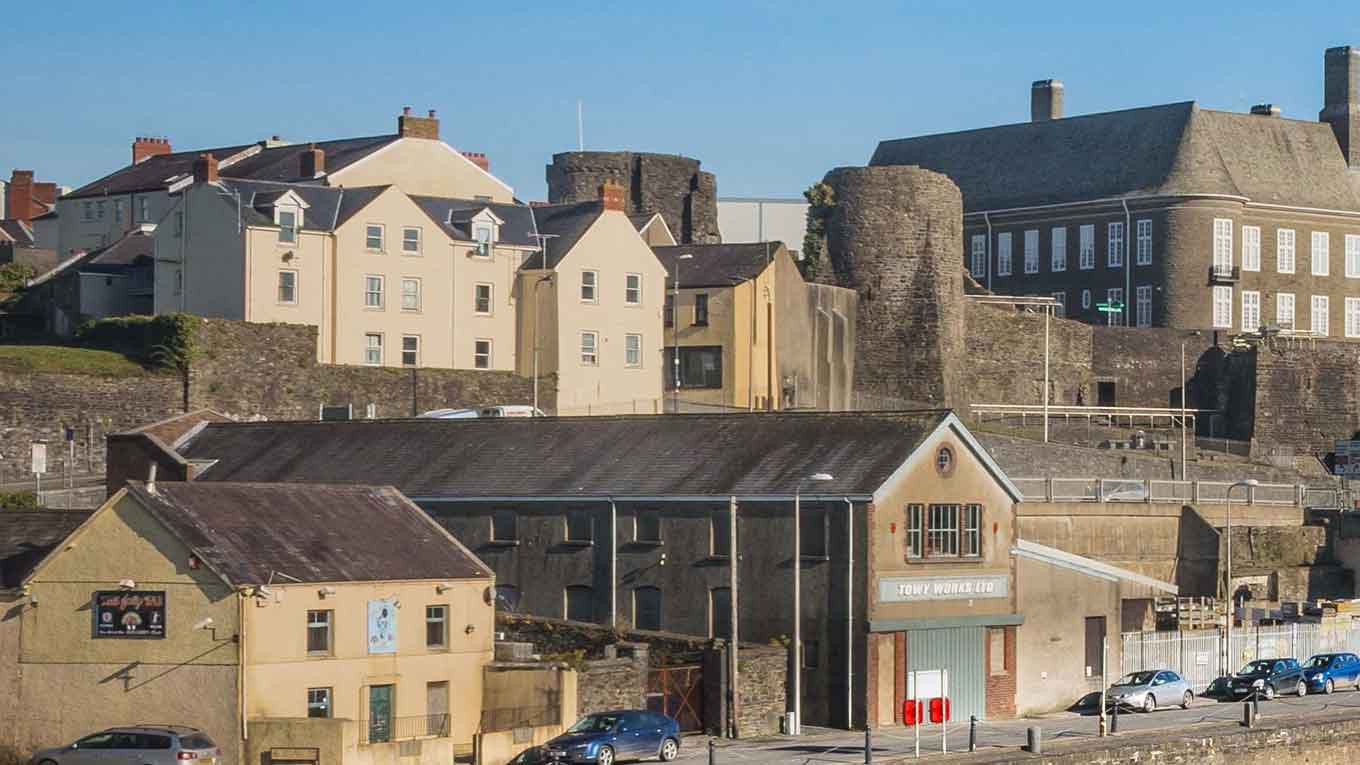
Carmarthen Castle by AS
Carmarthen Castle
Carmarthen castle originates from the beginning of the 12th century and replaced an earlier fortification located further down the River Towy. Later passing into the hands of the Crown and becoming the administrative centre of south west Wales. Captured and destroyed by Llywelyn the Great in 1215 it was recaptured by William Marshall the younger, earl of Pembroke in 1223 - the first masonry castle may have been constructed at this date.
The remains of Carmarthen Castle comprises a stone-revetted motte, twin-towered gatehouse, a south west corner tower and wall turret east of this together with short sections of curtain wall, all to the west of the site. The motte walls have two small half-round turrets to the north and paired buttresses representing the site of a further turret to west, the majority of this fabric is the result of 19th century reconstruction.
The monument is of national importance for its potential to enhance our knowledge of medieval defensive practices. The monument is well-preserved and an important relic of the medieval landscape. It retains significant archaeological potential, with a strong probability of the presence of both structural evidence and intact associated deposits.
Created: 18 March 2021 Edited: 29 November 2023
Carmarthen Castle LiDAR Map
Contains public sector information licensed under the Open Government Licence v3.0
Local History around Carmarthen Castle
There are some historic monuments around including:
Carmarthen CastleCarmarthen Roman Town Defences (part of) Standing Stone NE of Halfway HouseTrebersed Moated Site Carmarthen Roman Fort (part of) Pant-Glas Castle Mound Roman AmphitheatreThe Bulwarks (Civil War)Ty Cwm Tawel Anti-invasion Defences Garn-Fawr Tumuli & EnclosureDefended Enclosure 350m S of ClungwynBwlch-Bychan Round Barrow Castell y Domen, Gwempa Cynwyl Elfed Anti-invasion Defences Clos-Teg Standing Stones Merlins Hill Hillfort Rhyd-Lydan Cromlech Defended Enclosure 300m W of Pen y GarGarn-Fawr Castle Mound Cwrt Malle moated site, LlangynogSt John's Priory Pen Celli Standing Stone Banc Round Barrow Is-Coed-Uchaf Standing Stone Meini Llwydion Burial ChamberCarmarthen Roman Town (part of)Standing Stone NNW of Clomendy .






